Guillermo Bas, Lead Product Manager
More blogs by this author
Guillermo Bas, Lead Product Manager
More blogs by this authorIn this blog I will share my tips on how to use the search function in Microsoft Teams.
Now that we're using Microsoft Teams more, chat messages tend to pile up. To find an old message, type a keyword from the message in the Search Bar at the top, and press the ‘Enter’ key.
To get a result, you have to type the correct keyword, partial or complete, that the message contains.

Once you use the correct keyword, numerous messages containing the keyword will appear, whether posted in a Channel or a private conversation.
To enhance your search experience in Microsoft Teams, use the following terms and don’t add spaces between your search terms and the colon.
The search operators are the same you can use in for example google or the Office 365 portal. Note that search operators only work with when searching for files and not messages.
Organizing Teams and your channels can also help you find information more quickly.
My favourite way of organizing Teams is to use "Pin". Pinned channels stay at the top of the list so you don’t have to hunt them down.
To pin a channel, go to a channel name and hover over the upper-right hand corner to select More options 



You can also drag and drop channels into your desired order in Microsoft Teams. You can even hide inactive Teams and channels to declutter your navigation view and keep the most active ones on top.
Slash commands provide a quick, user-friendly, and consistent interface to take contextual actions, compose, navigate and complete frequent tasks. Instead of taking multiple actions to perform a task, such as open a chat in a new window, add a code block, navigate to settings or changing your presence, you can simply type slash in the compose box, select a command, and complete your task quickly. This feature will start rolling out in June 2024.
Atlas enhances Microsoft Teams search to surface all content for all types of users, including Guest users, from a single interface with pre-configured search scopes.
With Viva Connections your organization users will have access to Atlas Search within Microsoft Teams providing them with an enterprise class search experience that increases productivity and saves time by delivering more relevant results and enables users to find knowledge fast.
The more intuitive Atlas search experience is easy to access from the users’ digital workspace homepage. 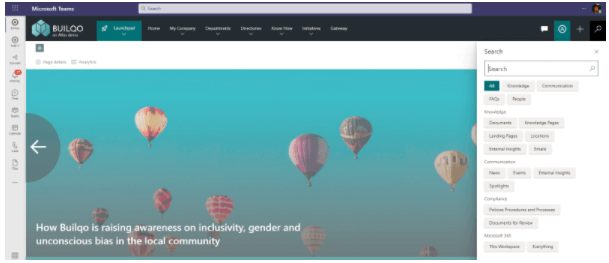
Accessing this direct search enables search across all sorts of pre-configured business or information architecture verticals. This works even without typing any keywords as you can just go straight into a search listing page and start refining using a wide range of taxonomy and metadata filters, being able to discover this way information sitting in data silos as well.
Within each search listing Atlas is capable of providing different types of content providing a unified user experience to reach any type of content in a single place. 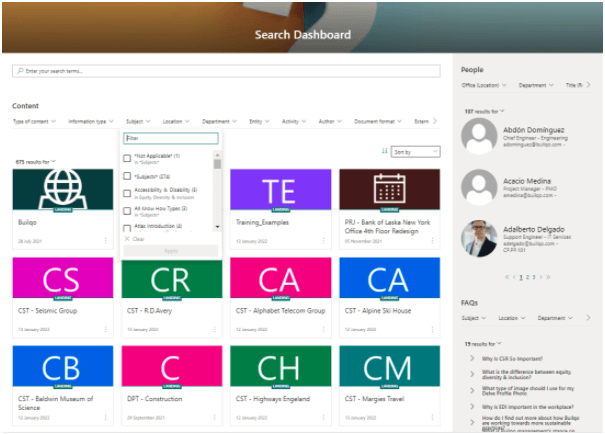
For guest users, that can’t search at all within Teams, Atlas provides a great experience and within the context of each team they have access to. Atlas enriches each Team with additional features like having access to the home page from a Teams tab in the General channel. Providing access from within Teams to the full Atlas Search for guest users, increases productivity and engagement of your extranet users.
It is worth noting all access through Atlas Search is permission trimmed ensuring the same level of compliance access to your data as from the native Microsoft search while providing a consistent experience and unleashing your user’s productivity.
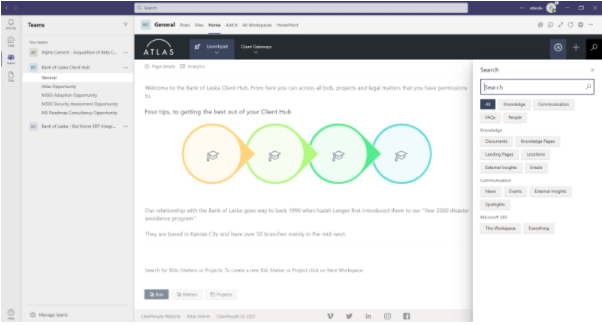
Atlas Search provides several productivity boosters to empower every user in your organization to achieve more from the context of each search result returned.
While browsing the list of documents found through a search query, you can just hover over the different file cards to access a full preview of the Document in line without having to leave the page or click anywhere.
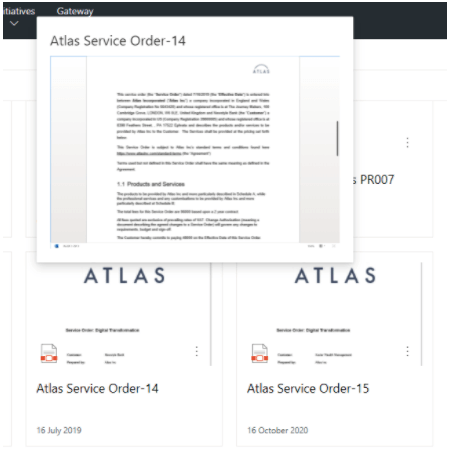
Once you're sure that you've found the document, page or item you require, Atlas provides a context menu with specific actions relevant to that type of file or item. This allows fast shortcuts - like sharing the document with a colleague, copying the link to share with someone or downloading the document for quick attachment into email, as well as providing direct access to the folder where the document is stored so you can find other documents in the same area.
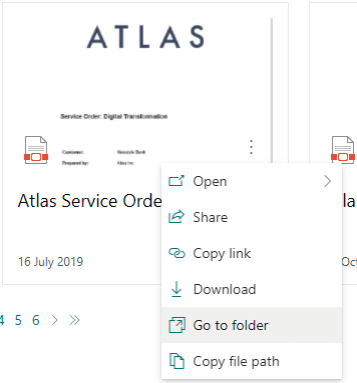
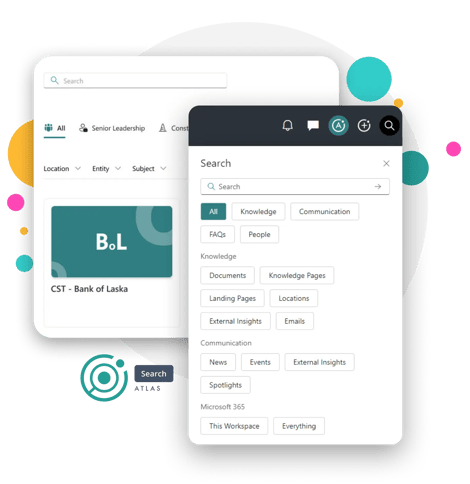
In this article, we have covered how to use Microsoft Teams search, including some tips & tricks to get the most out of the Teams search experience. Also, we went through some of the gaps that experience has today and how we can elevate the experience for our users by using Microsoft Viva and Atlas Search including:
Atlas enhances Microsoft Teams search to surface all content from a single interface with pre-configured search scopes.
Subscribe to our newsletter
This site is protected by reCAPTCHA and the Google Privacy Policy and Terms of Service apply.